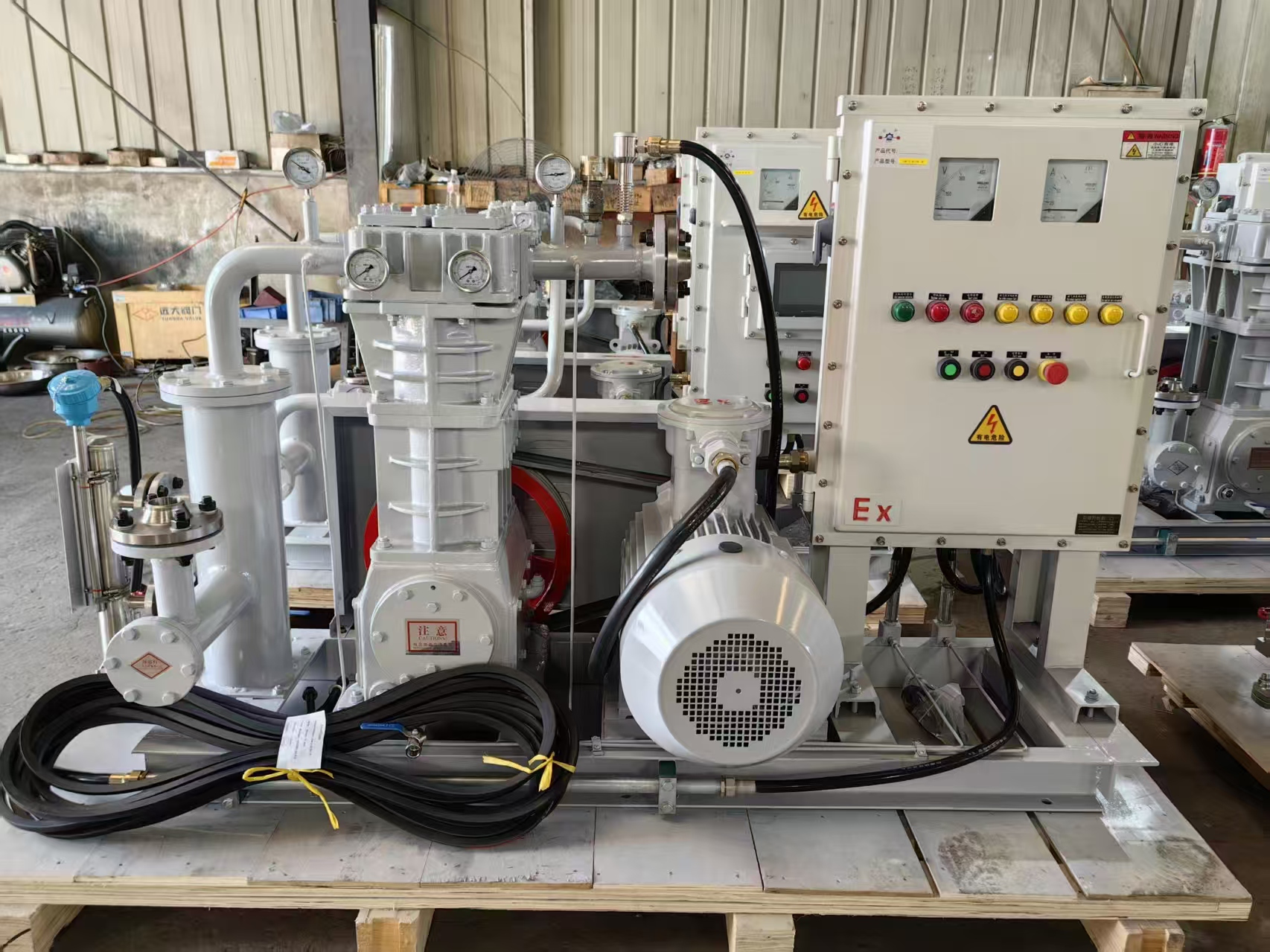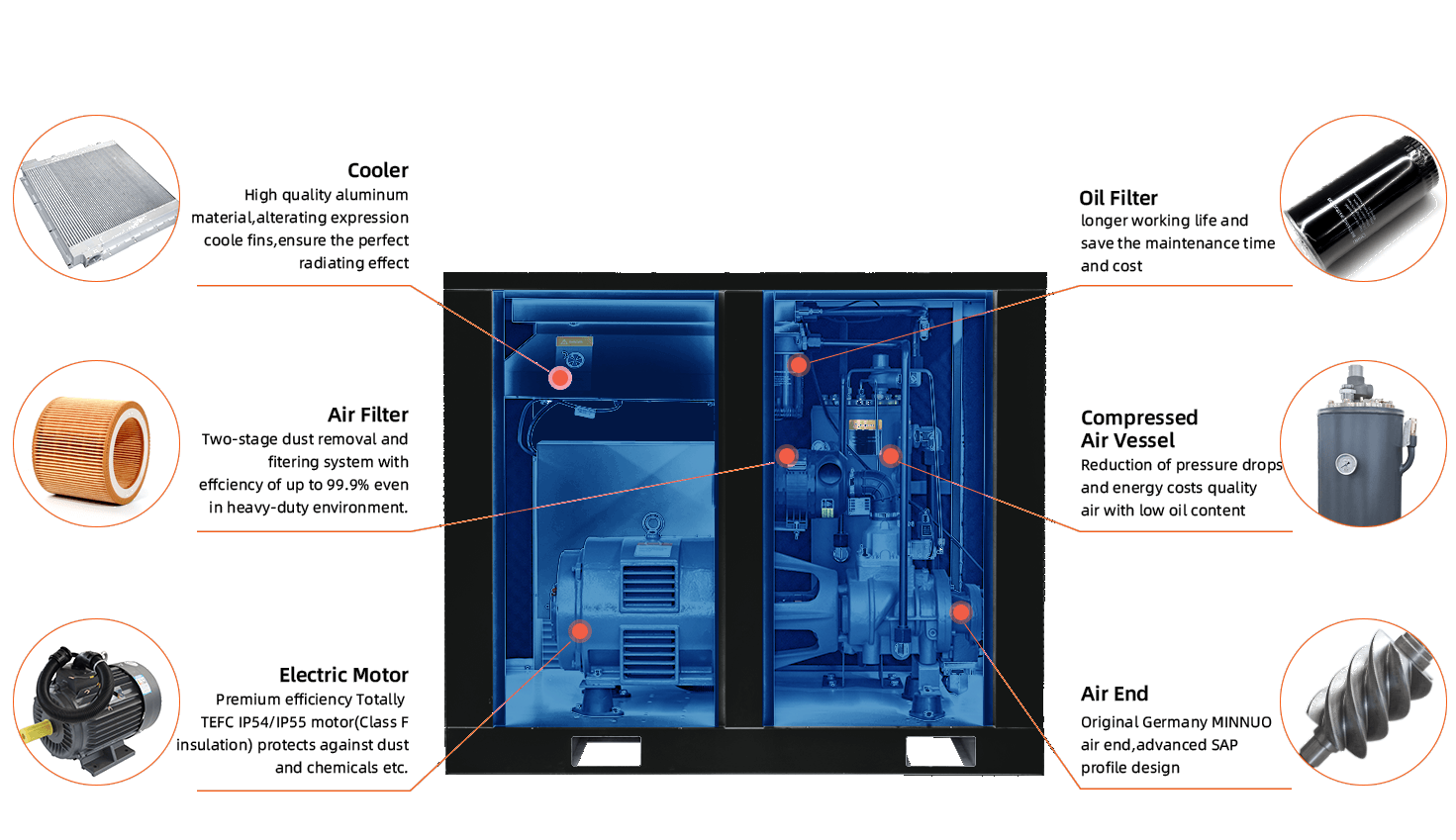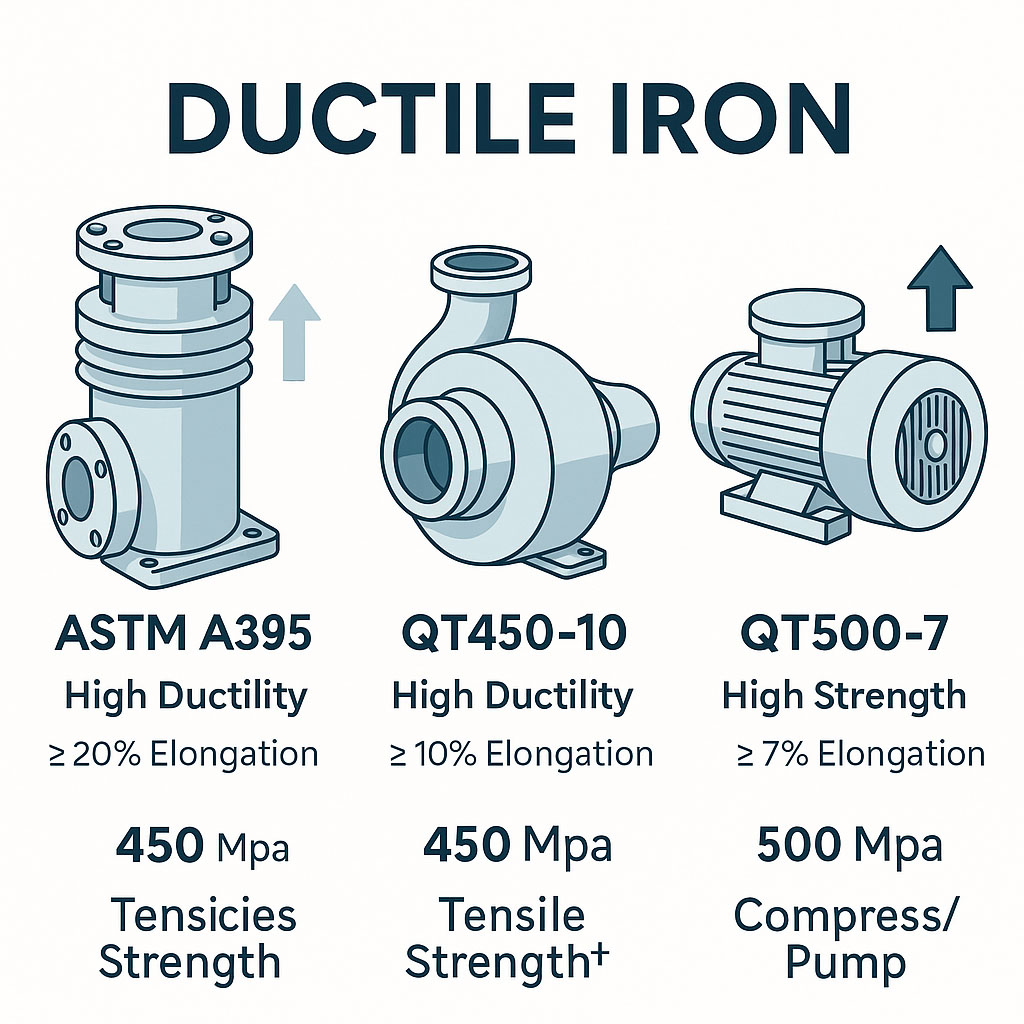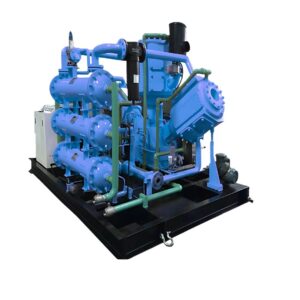Wenn industrielle Prozesse eine Hochdruckgasversorgung erfordern, Gas-Kolbenkompressoren-auch Kolbenkompressoren genannt- verdienen sich oft ihre Sporen. Im Gegensatz zu Schraubenkompressoren zeichnen sie sich durch ein hohes Verdichtungsverhältnis, einen effizienten Betrieb außerhalb der Nennleistung und die Vielseitigkeit der Gasart aus. Die Wahl des richtigen Modells erfordert jedoch eine Abwägung von Technologie, Größe, Materialien und Wartungsbedarf.
1. Hubkolben vs. Schraube: Kennen Sie Ihre Technologie
-
Druck-Fähigkeit: Hubkolbenkompressoren liefern wesentlich höhere Drücke (oft über 1.200 PSI oder ~80 bar), während Schraubenkompressoren im Allgemeinen auf ~250-600 PSIG begrenzt sind
-
Einschaltdauer & Lärm: Schraubenkompressoren bieten Dauerbetrieb und gleichmäßigere, leisere Leistung. Hubkolbenaggregate arbeiten zyklisch und erzeugen mehr Vibrationen, obwohl sie unter Teillastbedingungen besser funktionieren .
-
Anwendung Fit: Hubkolbenaggregate eignen sich hervorragend für Hochdruckanlagen mit intermittierendem Betrieb oder für gbp-Kompressoren, die auf einem Gestell montiert sind - ideal als industrielle Kolbenkompressoren in der Öl- und Gasindustrie, in verfahrenstechnischen Anlagen oder in Anlagen zur Stickstoffanreicherung.
🛠 Entdecken Sie Keep-Win's vollständig (Gas-Kolbenkompressor-Reihe)(https://keep-win.com/products/reciprocating-gas-compressors), die auf die Anforderungen von Hochdruck- und Mehrstufenanlagen zugeschnitten sind.
2. Kompressor-Dimensionierung: Vermeiden Sie Unter- oder Überdimensionierung
Die richtige Dimensionierung gewährleistet Zuverlässigkeit und Energieeffizienz. Hier erfahren Sie, wie Sie richtig dimensionieren:
-
Definieren Sie klare Prozessanforderungen: Bestimmen Sie den erforderlichen Durchfluss (CFM/Nm³/h) und den Förderdruck. Berücksichtigen Sie Bedarfsspitzen und Erweiterungspläne.
-
Faktor Gleichzeitigkeit & Sicherheitsmarge: Bei mehreren gleichzeitigen Benutzern ist von einer Gleichzeitigkeit von etwa 20-30% auszugehen, dann ist ein Sicherheitsfaktor von 25-50% hinzuzufügen, um Druckabfall oder Unterdimensionierung zu vermeiden.
-
Match Duty & Cylinder Design: Die meisten einstufigen Kolbenkompressoren sind für eine Einschaltdauer von 50% ausgelegt, d. h. sie benötigen größere Motoren, um abzukühlen und eine Überhitzung zu vermeiden.
Schlüsselvariablen: erforderlicher Druck (PSI/bar), freie Luftleistung (CFM/Nm³/h), Arbeitszyklus und Energiequelle.
3. Gaseigenschaften und Materialkompatibilität
Hubkolbenverdichter müssen mit bestimmten Gaseigenschaften zurechtkommen - insbesondere bei aggressiven oder hochreinen Gasen. Bedenken Sie:
-
Ätzende oder abrasive Gase können Edelstahlkolben, Auskleidungen und spezielle Ventilmaterialien erforderlich sein.
-
Konstruktion der Dichtung eine Verunreinigung des Trägers vermeiden müssen - bei reinheitskritischen oder gefährlichen Gasen sind zweistufige oder spülgepackte Dichtungssysteme unerlässlich.
-
API 618-Varianten werden häufig für petrochemische oder kryogene Dienste verwendet und mit hochfesten Stangen und Schmiedeteilen gebaut.
Bei Keep-Win sind unsere Kompressoren für Prozessgase, Umgebungen mit hohem Korrosionsschutz oder hochreine Standards anpassbar, um die Eignung und Zuverlässigkeit für jede Anwendung zu gewährleisten.
4. Pulsation, Vibration und Fundamentanforderungen
Kolbengetriebene Kompressoren erzeugen Druckpulsationen und Vibrationsschleifen, wenn die Rohrleitungen und Halterungen nicht richtig ausgelegt sind. Die Vernachlässigung von Pulsationsflaschen, Halterungen, nicht isolierten Fundamenten oder der Vorspannung von Kolbenstangen kann zu mechanischem Versagen oder einer verkürzten Lebensdauer der Dichtungen führen. Eine ordnungsgemäße akustisch-mechanische Analyse und TAPS-Modellierung sind typische Schritte, um die langfristige Integrität sicherzustellen.
Keep-Win bietet API-618 Skid-Designs mit vollständig entwickelter Pulsationsunterdrückung und Fundamentschemata, um die Zuverlässigkeit vor Ort zu garantieren.
5. Wartungsplanung: Verwenden Sie eine bewährte Checkliste
Hubkolbenkompressoren erfordern einen höheren Wartungsaufwand, aber die richtige Ausführung gewährleistet Betriebszeit und Energieeinsparungen:
Highlights der Präventiv-Checkliste:
-
Täglich oder vor dem Start: Schmiermittelstand prüfen, Kondensat ablassenauf undichte Stellen oder ungewöhnliche Vibrationen/Geräusche achten
-
Wöchentlich: Riemenspannung prüfenReinigen Sie die Ansaugfilter, überwachen Sie die Funktion des Auslassventils.
-
Monatlich und vierteljährlich: Ersetzen ÖlfilterReinigen Sie die Siebe, prüfen Sie das Zylinderspiel und das Drehmoment des Kreuzkopfes.
-
Jährlich: Kolbenringe austauschen, Abschaltdruckprüfung durchführen, Schwingungsdiagnose auf FAT-Ebene durchführen.
Keep-Win Kompressoren werden mit vollständigen Wartungsplänen, Ersatzteildiagrammen und Servicekits geliefert, die für die Inbetriebnahme bereitstehen.
6. Lebenszykluskosten und Zuverlässigkeit - Kompromisse
Hubkolbenkompressoren verursachen zwar im Allgemeinen höhere Wartungskosten als Schraubenkompressoren, doch gleichen sie dies durch ihre Leistung aus:
-
Lange Überholungsintervalle über mehrere Jahre (Stangen, Ventile und Ringe sind auf eine lange Lebensdauer ausgelegt)
-
Hervorragender Verdichtungswirkungsgrad bei Nennbedingungen
-
Einfache Integrationen für mehrstufige Systeme und mehrere Gaskreisläufe
Schraubenkompressoren können zwar Arbeitskosten sparen, aber bei Drücken über ~8 bar oder Arbeitszyklen mit starker zyklischer Beanspruchung bieten Kolbenkompressoren oft eine bessere Lebenszyklusökonomie.
7. Steuerung & Integration Merkmale
Moderne Kolbenkompressoren sind mit intelligenten Steuerungen, variablen Entlastungsvorrichtungen und Fernüberwachung ausgestattet. Suchen Sie nach Systemen, die Folgendes bieten:
-
Be-/Entladen oder schrittweises Entladen
-
Integrierte Instrumentierung und PLC-Integration
-
Lecksuchfunktion und Überspannungsschutz
KEEPWORD-Hardware umfasst optional IoT-fähige Module für Echtzeit-Überwachung und -Warnungen - zur Optimierung von Wartung und Betriebszeit, ohne dass Feldbegehungen erforderlich sind.
Zusammenfassende Tabelle: Wichtige Designüberlegungen
| Thema | Warum es wichtig ist |
|---|---|
| Druck und Durchfluss | Anpassung an die Systemanforderungen und künftige Erweiterungen |
| Technologie Typ | Hubkolben für intermittierenden/Hochdruckeinsatz |
| Materialien und Siegeldesign | Vermeidung von Problemen mit der Gasverträglichkeit und Gewährleistung der Reinheit |
| Pulsation und Fundament | Verbessern Sie die mechanische Integrität und reduzieren Sie das Risiko von Ausfallzeiten |
| Planung der Instandhaltung | Befolgen Sie eine Checkliste für die tägliche bis jährliche Instandhaltung |
| Lebenszykluskosten | Bevorzugen Sie Effizienz gegenüber einer einfachen Preisgestaltung |
| Kontrollen und Integration | Ermöglicht Betriebszeit durch logikbasierte Verwaltung |
Warum Keep-Win's Solution Packs wählen
Keep-Win liefert API 618-konform und Industriekolbenkompressor Lösungen - von ein- bis mehrstufigen Konfigurationen. Unsere Einheiten umfassen mechanische Konstruktion, Pulsationsdämpfung, intelligente Steuermodule und dokumentierte Wartungsunterstützung. Erfahren Sie mehr unter:
-
[Serie Gas-Hubkolbenkompressoren](https://keep-win.com/products/reciprocating-gas-compressors)
-
[Prozessgas-Kompressionspakete](https://keep-win.com/products/process-gas-compressors)
Fazit
Die Auswahl des richtigen Gas-Kolbenkompressor bedeutet, Druck, Durchfluss, Gasart, mechanische Konstruktion und Wartung über die gesamte Lebensdauer zu verstehen. Bei Beachtung von Dimensionierung, Pulsation und Wartung bieten diese Kompressoren unübertroffene Effizienz und Zuverlässigkeit für Hochdruck- oder intermittierende Anwendungen.
Wenn Sie ein System entwerfen möchten, das den einzigartigen Spezifikationen Ihrer Anlage entspricht, wenden Sie sich noch heute an das Gas-Engineering-Team von Keep-Win, um individuelle Empfehlungen und eine zuverlässige Bereitstellung zu erhalten.











